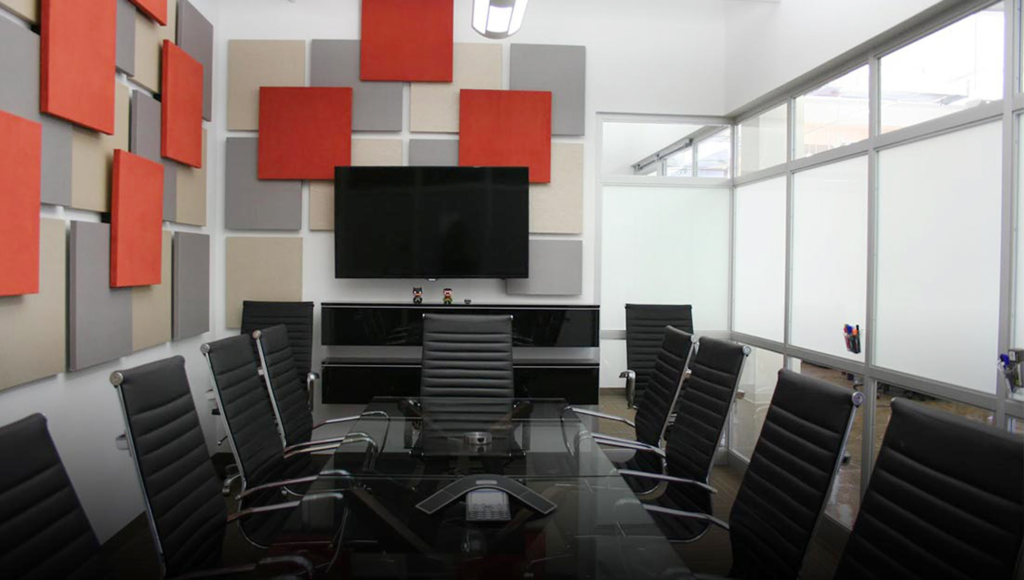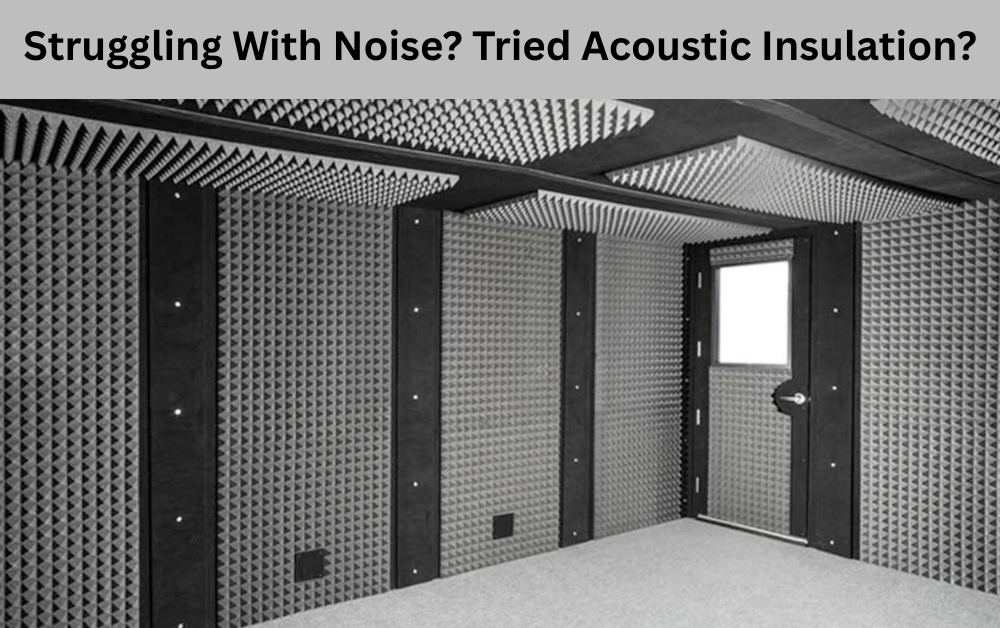Introduction
In a world filled with constant noise—traffic, neighbors, machinery, or even everyday household activities—finding peace and quiet can feel like an impossible task. Whether you live in a bustling urban apartment or manage a noisy commercial facility, excess sound can quickly become a source of stress, distraction, and even health problems. That’s where acoustic insulation comes into play. But what exactly is it, and can it truly resolve your noise struggles? This article explores the fundamentals of acoustic insulation, how it works, and why it may be the solution your space desperately needs.
Understanding Acoustic Insulation
Acoustic insulation refers to materials and methods used to reduce, control, or eliminate unwanted sound within a space. Unlike soundproofing, which aims to completely block sound transmission, acoustic insulation focuses on minimizing internal sound reflections and managing sound travel within or between rooms. It’s used in residential homes, commercial buildings, studios, and industrial settings to create acoustically balanced environments.
NOTE: Offices and homes had experienced a dramatic drop in noise levels after acoustic sound proof insulation had been applied. Let perfectacousticsuae help transform your environment with proven solutions.
Typical acoustic insulation materials include mineral wool, fiberglass, foam panels, and dense vinyl barriers. These materials can be installed in walls, ceilings, floors, and around HVAC systems to improve acoustic performance.
How Acoustic Insulation Works
Sound travels through vibrations in air, solids, and liquids. When these vibrations encounter a surface like a wall or ceiling, they can either be reflected, absorbed, or transmitted. Acoustic insulation works by influencing these interactions in several ways:
Absorption: Certain materials, such as foam and fiberglass, absorb sound waves, preventing them from bouncing around the room.
Blocking: Dense materials help stop sound from passing through walls, floors, and ceilings.
Damping: Special compounds and layered systems reduce the energy of sound waves as they pass through different surfaces.
Decoupling: Techniques like resilient channels and floating floors separate structural elements to minimize vibration transmission.

Benefits of Acoustic Insulation
Creating Peaceful Living Environments
In residential settings, acoustic insulation helps homeowners reduce noise from neighboring units, streets, and internal disturbances such as footsteps, appliances, and loud conversations. The result is a more serene and comfortable home.
Enhancing Work Environments
Offices and corporate buildings benefit significantly from acoustic insulation. By reducing noise levels, these materials promote concentration, reduce stress, and improve employee productivity. Meeting rooms and conference areas also gain enhanced speech clarity.
Boosting Audio Clarity in Studios
Recording studios, home theaters, and podcast rooms rely heavily on acoustic insulation to create acoustically controlled environments. It enhances sound clarity, reduces echo, and helps maintain accurate audio recording and playback.
Ensuring Regulatory Compliance
In industrial and commercial environments, acoustic insulation is essential for meeting health and safety regulations. It protects workers from prolonged exposure to harmful noise levels and contributes to overall operational efficiency.
Improving Property Value
Acoustic insulation adds value to both residential and commercial properties. Soundproofed or acoustically treated buildings are seen as higher quality and more comfortable, making them attractive to potential buyers or tenants.
Key Materials Used in Acoustic Insulation
Mineral Wool
Mineral wool, made from natural or synthetic minerals, is excellent for absorbing sound in wall cavities and ceiling panels. Its dense structure and fire-resistant properties make it a popular choice in both residential and commercial applications.
Fiberglass
Fiberglass batts or boards are commonly used for both thermal and acoustic insulation. They are lightweight, cost-effective, and suitable for walls, floors, and ceilings. Fiberglass is especially effective at mid to high-frequency noise control.
Acoustic Foam
This is a polyurethane-based material typically used inside rooms to reduce reverberation. It comes in various shapes such as wedges and pyramids, which increase surface area and improve absorption performance.
Dense Vinyl Barriers
These are flexible, heavy barriers often added to walls, ceilings, and floors to block airborne noise. They are particularly effective in multi-family housing and commercial environments.
Acoustic Panels
Decorative and functional, these panels are often placed on walls in offices, studios, and schools to improve speech intelligibility and reduce noise.
Applications Across Different Environments
Residential Use
Acoustic insulation is beneficial in bedrooms, nurseries, home theaters, and shared walls in apartments. It helps create restful spaces and minimizes disturbance from neighbors or household activities.
Commercial Spaces
Restaurants, offices, hotels, and conference halls all benefit from better sound management. Insulation materials reduce background noise and echo, enhancing the customer and employee experience.
Educational Institutions
Schools and universities often use acoustic insulation to ensure quiet classrooms and effective learning environments. Insulation improves speech clarity and reduces distractions.
Industrial Facilities
In factories and production sites, loud machinery can cause noise pollution. Acoustic insulation not only protects workers’ hearing but also ensures regulatory compliance.
Healthcare Environments
Hospitals and clinics use acoustic insulation to support restful recovery for patients. Quiet surroundings are linked to faster healing and reduced stress.
Proper Installation Techniques
Pre-Installation Assessment
Before choosing and installing insulation, a thorough sound assessment should be conducted. Acoustic consultants can analyze your space, identify noise sources, and recommend suitable materials.
Wall and Ceiling Insulation
Materials like mineral wool and fiberglass are typically placed within cavities in walls and ceilings. Dense vinyl barriers and damping compounds can be added to increase sound isolation.
Floor Insulation
Floating floors with underlays help minimize impact noise such as footsteps or moving furniture. Carpet padding also contributes to reducing noise in multi-story buildings.
Door and Window Treatments
Sealing gaps around doors and windows with acoustic caulk, and installing heavy curtains or acoustic glass, further enhances overall sound control.
Maintenance and Longevity
Acoustic insulation materials are designed to last for many years with minimal maintenance. Most require no upkeep beyond routine cleaning, such as dusting or vacuuming. It is important to inspect installations periodically to ensure that moisture, pests, or physical damage have not compromised their effectiveness.
Environmental Impact and Sustainability
Modern acoustic insulation solutions often incorporate recycled or environmentally friendly materials. Fiberglass and mineral wool are frequently made from post-consumer content. Choosing sustainable options contributes to green building certifications and promotes better indoor air quality.
Investing in Acoustic Insulation
Acoustic insulation is not just a functional upgrade—it’s an investment in comfort, health, and quality of life. Costs vary depending on the materials and size of the project, but the long-term benefits far outweigh the initial expense. Enhanced privacy, productivity, and overall satisfaction make it a worthwhile improvement for almost any setting.
Key Considerations Before You Begin
Identify Your Goals: Do you want to block sound, absorb it, or both?
Know Your Space: Assess room size, layout, and current materials.
Set a Budget: Balance performance with affordability.
Seek Expert Advice: Professional input can prevent mistakes and ensure the best results.
Final Thoughts
Noise doesn’t have to be an unavoidable part of your daily life. Acoustic insulation offers a reliable, effective solution for anyone struggling with sound issues in their environment. Whether you’re trying to sleep better, work in peace, or record crystal-clear audio, the right insulation can make all the difference.
By addressing unwanted noise with a strategic acoustic plan, you’re not just improving your space—you’re enhancing the way you live and work within it. Now is the perfect time to explore what acoustic insulation can do for your home, office, or studio. Say goodbye to noise and hello to calm with smart, targeted acoustic solutions.
For More Isightful Articles Related To This Topic, Feel Free To Visit: techners












Leave a Reply